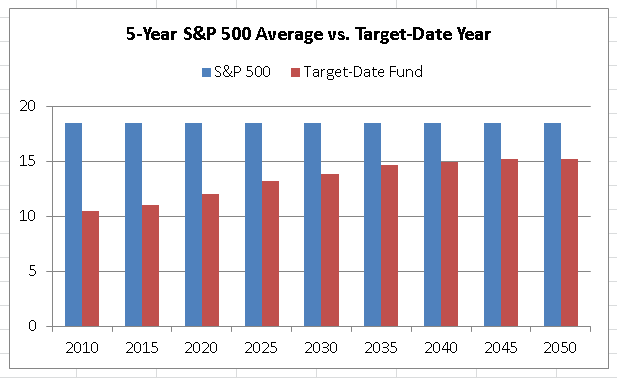Mutual Funds Rate of Return and Mutual Funds S&P 500
A mutual fund’s rate of return can vary greatly based on a number of factors, making it difficult to answer. However, I can help you understand how returns are calculated and what variables affect them:
Types of Rates:
- Absolute return: At its simplest, it shows the total percentage gain or loss from your investment over a specified period of time. For example, if you invested Rs. 10,000 and it increased to Rs. 12,000 in a year, your absolute return will be 20%.
- Annual Return: It compares returns across different time frames. It takes the absolute return for a period and adjusts it to reflect the annual rate. For example, a 20% return over 6 months would be annualized into a 40% return (20% x 2).
- Total Return: It considers all sources of profit, including dividend payments and capital appreciation.
- Return back: It measures performance over a specified period of time up to the present time. For example, 1 year past return tells you how much the fund earned/lost in the last year.
Factors Affecting Returns:
- Fund Type: Different fund categories, such as equity, debt, or hybrid, have different risk-return profiles. Equity funds generally offer higher potential returns but also higher risk, while debt funds offer lower risk but lower returns.
- Market Conditions: Overall market performance plays an important role. Bull markets can lead to high profits, while bear markets can result in losses.
- Fund Manager Skills: The skill and experience of the fund manager can affect the fund’s performance.
- Investment horizon: Longer investment horizons generally benefit from compounding and generate higher returns than shorter time frames.
- Fees and Expenses: Administrative fees and other costs can eat into your return.
Resources for finding prices:
- Fund Websites: Most mutual funds publish their current and historical rates of return on their websites.
- Financial Websites: Many financial websites aggregate and compare mutual fund returns across different categories and time frames.
- Investment Advisor: Consulting a financial advisor can help you understand specific fund returns and choose the right one for your goals and risk tolerance.
Remember, past performance is not necessarily indicative of future results. Carefully consider your risk tolerance, investment goals and time horizon before choosing a mutual fund based on historical returns.
Mutual funds that track the S&P 500 are a popular choice for investors seeking broad exposure to the U.S. stock market. These funds aim to track the performance of the S&P 500 index, which is composed of the 500 largest publicly traded companies in the U.S. by market capitalization.
Here are some important things to know about S&P 500 mutual funds:
Advantages:
- Diversity: Investing in an S&P 500 fund provides instant diversification across sectors and industries, reducing your risk compared to owning individual stocks.
- Low risk: Compared to actively managed funds, S&P 500 funds generally carry less risk due to their passive nature and broader diversification.
- Low Fee: Many S&P 500 index funds have low expense ratios, meaning they charge lower fees than actively managed funds.
- Long-term growth potential: Historically, the S&P 500 has delivered strong long-term returns, making it a suitable option for investors with long-term goals.
Types of S&P 500 Funds:
- Index Funds: These funds passively track the S&P 500 index and seek to match its performance as closely as possible.
- ETF (Exchange Traded Funds): Like index funds, ETFs track the S&P 500 but trade like stocks on exchanges, offering greater flexibility and intraday liquidity.
- Large Cap Growth Funds: These funds invest in a specific subset of S&P 500 companies that have high growth potential.
Things to consider:
- Expense ratio: While many S&P 500 funds have low expense ratios, compare different options to find the most cost-effective.
- Tracking Error: Index funds may not track the S&P 500 perfectly due to factors such as tracking methods and dividend reinvestment.
- Fluctuations: While the S&P 500 offers long-term growth, it can experience short-term market fluctuations. Understand your risk tolerance before investing.
Popular S&P 500 Mutual Funds:
- Schwab S&P 500 Index Fund (SWPPX)
- Fidelity® 500 Index Fund (FXAIX)
- Vanguard 500 Index Fund (VFIAX)
- iShares Core S&P 500 ETF (IVV)
- SPDR S&P 500 ETF Trust (SPY)
Choosing the right S&P 500 fund depends on your individual investment goals, risk tolerance, and preferred investment style. Do your research, compare different options, and consult a financial advisor if needed before making an investment decision.
